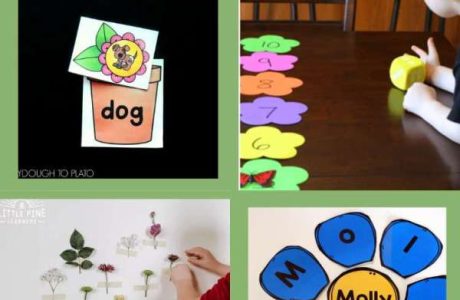After posting some activity ideas for little kids related to Valentine’s Day, and a few card and craft ideas, here are some great math and science activities you can do with older kids for Valentine’s Day. Enjoy!
Valentine’s Day is a holiday that is all about love and celebration, but it can also be a great opportunity to teach children about math and science in a fun and engaging way.
Whether you’re a parent looking for ways to help your child learn at home or a teacher looking for fun and educational activities for your classroom, there are plenty of math and science-related Valentine’s Day activities that can help to spark a love of learning in children.
From measuring ingredients for Valentine’s Day treats to conducting science experiments, there are many ways to use the holiday as a theme for teaching math and science.
In this article, we will explore some of the best math and science-related Valentine’s Day activities for learning, and provide tips and ideas for incorporating these activities into your teaching. So, these activities can be a great way to celebrate Valentine’s Day while also learning about math and science.
Valentine Heart Glyph — Inspiration Laboratories — not exactly math, but a fun way to make a code on a heart shape
Heart Shaped Math Puzzle — Handmade Kids Art — use triangles to make a heart shape
Valentine’s Day Math Centers — You’ve Got this Math — for adding within 10
Activity Sheet for Measuring Centimeters — You’ve Got this Math
Adding Doubles Activity Sheet — Fantastic Fun & Learning
Cupid’s Arrow Math Game — Teach Beside Me
Valentine’s Math with Pascal’s Triangle — Teach Beside Me
Heart Tessellation — Teach Beside Me
Check out our Online store for special buys on Educational gifts We find bulk items and end-of-stock supplies to bring you heavily discounted items. (make sure you check our store often so you don’t miss out on new stock). We also have some free printable files, including a Science PDF for learning about Microscopes.
Looking for more resources? Check out these board games for learning Math and Multiplication?
Dissolving Candy Hearts — Little Bins for Little Hands
Growing Salt Crystal Hearts — Little Bins for Little Hands
Valentine’s Day STEM Challenges — Schooling a Monkey — includes slime, oobleck, a playdough heart, magic color reveal and more
LED Roses — Teach Beside Me
Here are five other ways to use Valentine’s Day as the theme for teaching science and math to children:
- Measure the ingredients for Valentine’s Day treat: Have children measure out the ingredients for Valentine’s Day treat, such as cookies or cupcakes. This can help to practice measurement skills and introduce basic concepts of math and science.
- Create Valentine’s Day graphing activity: Have children create a graph showing their favorite Valentine’s Day treats or activities. This can help to practice graphing skills and introduce basic concepts of math and data analysis.
- Explore the science of hearts: Have children learn about the anatomy of the heart and how it works. This can be a great opportunity to introduce basic concepts of anatomy and physiology.
- Practice geometry with Valentine’s Day shapes: Have children create Valentine’s Day-themed shapes using construction paper or other materials. This can help to practice geometry skills and introduce basic concepts of geometry.
- Conduct a Valentine’s Day science experiment: Have children conduct a simple science experiment, such as making a heart-shaped crystal or observing how different materials absorb different amounts of water. This can be a fun and engaging way to introduce basic concepts of science.
To make simple slime, you will need:
- 1 cup of clear glue
- 1/2 cup of water
- 1/2 cup of liquid starch
- Food coloring (optional)
- Glitter (optional)
Here’s how to make your slime:
- In a large mixing bowl, combine the glue and water. Stir well to combine.
- If you want to add food coloring or glitter to your slime, mix it in with the glue and water.
- Add the liquid starch to the bowl and stir until the slime begins to form. You may need to use your hands to knead the slime to help it come together.
- Once the slime is fully formed, it is ready to play with! You can stretch it, squish it, and mold it into different shapes. Just be sure to store it in an airtight container when you’re not using it to keep it fresh.
I hope this simple slime recipe was helpful! Let me know if you have any questions.







Leave a Reply